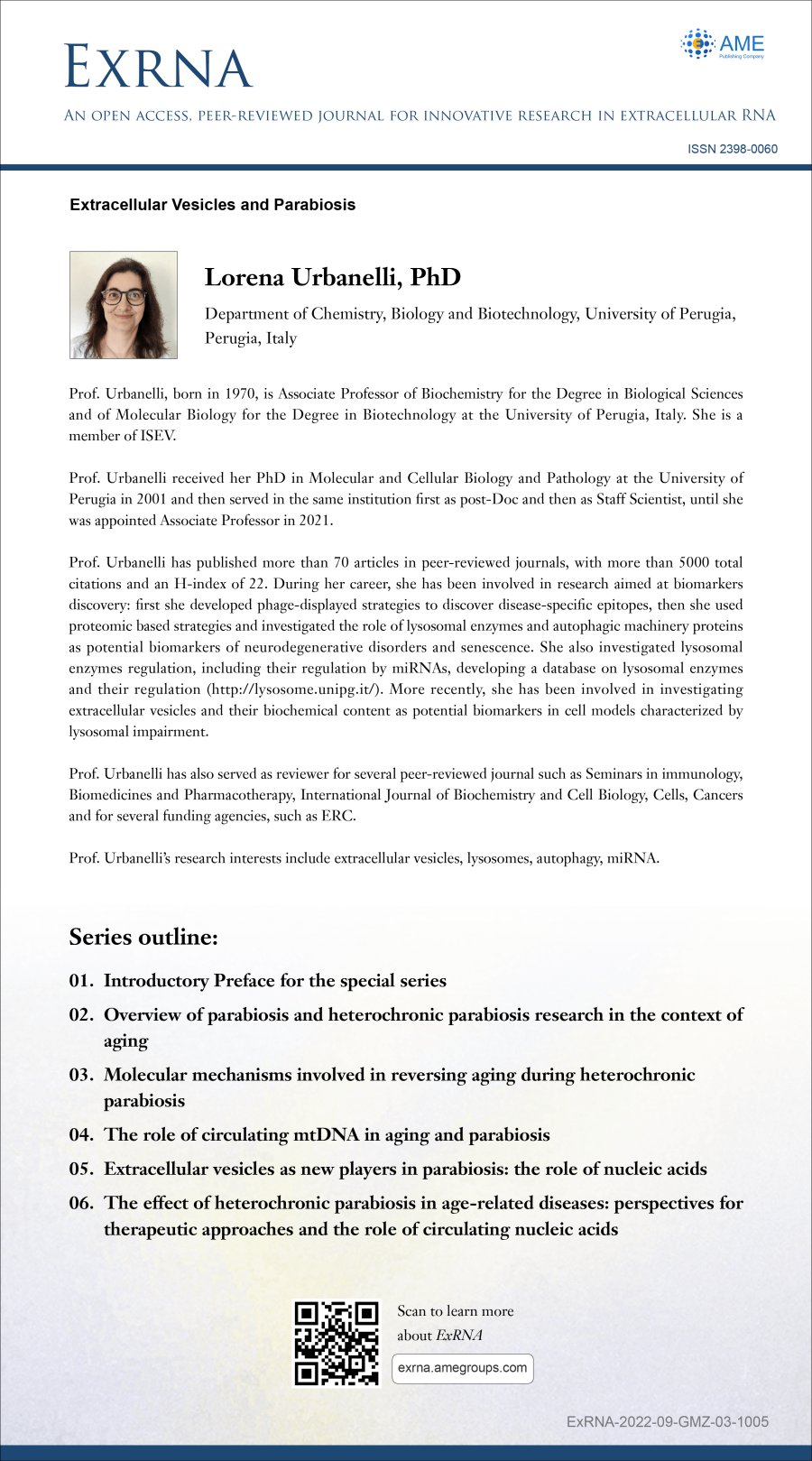
This series on “Extracellular Vesicles and Parabiosis” is edited by Dr. Lorena Urbanelli from University of Perugia, Italy.
Lorena Urbanelli, PhD
Department of Chemistry, Biology and Biotechnology, University of Perugia, Perugia, Italy
Prof. Urbanelli, born in 1970, is Associate Professor of Biochemistry for the Degree in Biological Sciences and of Molecular Biology for the Degree in Biotechnology at the University of Perugia, Italy. She is a member of ISEV.
Prof. Urbanelli received her PhD in Molecular and Cellular Biology and Pathology at the University of Perugia in 2001 and then served in the same institution first as post-Doc and then as Staff Scientist, until she was appointed Associate Professor in 2021.
Prof. Urbanelli has published more than 70 articles in peer-reviewed journals, with more than 5000 total citations and an H-index of 22. During her career, she has been involved in research aimed at biomarkers discovery: first she developed phage-displayed strategies to discover disease-specific epitopes, then she used proteomic based strategies and investigated the role of lysosomal enzymes and autophagic machinery proteins as potential biomarkers of neurodegenerative disorders and senescence. She also investigated lysosomal enzymes regulation, including their regulation by miRNAs, developing a database on lysosomal enzymes and their regulation (http://lysosome.unipg.it/). More recently, she has been involved in investigating extracellular vesicles and their biochemical content as potential biomarkers in cell models characterized by lysosomal impairment.
Prof. Urbanelli has also served as reviewer for several peer-reviewed journal such as Seminars in immunology, Biomedicines and Pharmacotherapy, International Journal of Biochemistry and Cell Biology, Cells, Cancers and for several funding agencies, such as ERC.
Prof. Urbanelli’s research interests include extracellular vesicles, lysosomes, autophagy, miRNA.
Series outline
- Introductory Preface for the special series
- Overview of parabiosis and heterochronic parabiosis research in the context of aging
- Molecular mechanisms involved in reversing aging during heterochronic parabiosis
- The role of circulating mtDNA in aging and parabiosis
- Extracellular vesicles as new players in parabiosis: the role of nucleic acids
- The effect of heterochronic parabiosis in age-related diseases: perspectives for therapeutic approaches and the role of circulating nucleic acids
Disclosure:
The special series “Extracellular Vesicles and Parabiosis” was commissioned by the editorial office, ExRNA without any funding or sponsorship. Lorena Urbanelli is serving as the unpaid Guest Editor for the special series.
Announcement
ExRNA is no longer published by AME Publishing Company. The journal is continuing in cooperation with International Open Science Platform as of October 1st, 2023. To submit your manuscript to ExRNA, please visit https://elspub.com/journals/exrna/home.
AME Publishing Company hosts an archive of all articles previously published in the journal from January 1st, 2021 to September 30th, 2023. All articles published in the journal during its time with AME Publishing Company will remain fully searchable via https://exrna.amegroups.org/.
For any journal-related queries, please contact exrna@elspub.com
Updated on September 29, 2023
